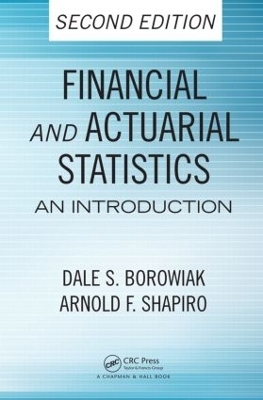
Financial and Actuarial Statistics
Chapman & Hall/CRC (Verlag)
978-1-4200-8580-8 (ISBN)
Understand Up-to-Date Statistical Techniques for Financial and Actuarial Applications
Since the first edition was published, statistical techniques, such as reliability measurement, simulation, regression, and Markov chain modeling, have become more prominent in the financial and actuarial industries. Consequently, practitioners and students must acquire strong mathematical and statistical backgrounds in order to have successful careers.
Financial and Actuarial Statistics: An Introduction, Second Edition enables readers to obtain the necessary mathematical and statistical background. It also advances the application and theory of statistics in modern financial and actuarial modeling. Like its predecessor, this second edition considers financial and actuarial modeling from a statistical point of view while adding a substantial amount of new material.
New to the Second Edition
Nomenclature and notations standard to the actuarial field
Excel exercises with solutions, which demonstrate how to use Excel functions for statistical and actuarial computations
Problems dealing with standard probability and statistics theory, along with detailed equation links
A chapter on Markov chains and actuarial applications
Expanded discussions of simulation techniques and applications, such as investment pricing
Sections on the maximum likelihood approach to parameter estimation as well as asymptotic applications
Discussions of diagnostic procedures for nonnegative random variables and Pareto, lognormal, Weibull, and left truncated distributions
Expanded material on surplus models and ruin computations
Discussions of nonparametric prediction intervals, option pricing diagnostics, variance of the loss function associated with standard actuarial models, and Gompertz and Makeham distributions
Sections on the concept of actuarial statistics for a collection of stochastic status models
The book presents a unified approach to both financial and actuarial modeling through the use of general status structures. The authors define future time-dependent financial actions in terms of a status structure that may be either deterministic or stochastic. They show how deterministic status structures lead to classical interest and annuity models, investment pricing models, and aggregate claim models. They also employ stochastic status structures to develop financial and actuarial models, such as surplus models, life insurance, and life annuity models.
Dale S. Borowiak is a Professor Emeritus at the University of Akron, where he served for 35 years teaching statistics and initiating the actuarial science program. He received a Ph.D. from Bowling Green State University. His research has been published in professional journals in the fields of statistics, actuarial science, and engineering. He also published Model Discrimination for Nonlinear Regression Models, along with the first edition of the current text. Arnold F. Shapiro is a Professor Emeritus at the Pennsylvania State University, where he was director of the actuarial program. He received a Ph. D. from the University of Pennsylvania (Wharton). He has published more than 100 articles in professional journals and two books. A Fellow of the Society of Actuaries and an Enrolled Actuary, he been a recipient of the Innovation in Teaching Award from the American Risk and Insurance Association and the Best Research Paper Award from the Health Section of the Society of Actuaries.
Statistical Concepts. Statistical Techniques. Financial Computational Models. Deterministic Status Models. Future Lifetime Models and Life Tables. Stochastic Status Models. Advanced Stochastic Status Models. Markov Chain Methods. Scenario and Simulation Testing. Further Statistical Considerations. Appendices. References. Index.
| Erscheint lt. Verlag | 31.10.2014 |
|---|---|
| Zusatzinfo | 69 Tables, black and white; 21 Illustrations, black and white |
| Sprache | englisch |
| Maße | 156 x 234 mm |
| Gewicht | 725 g |
| Themenwelt | Mathematik / Informatik ► Mathematik ► Statistik |
| Wirtschaft ► Betriebswirtschaft / Management ► Finanzierung | |
| ISBN-10 | 1-4200-8580-8 / 1420085808 |
| ISBN-13 | 978-1-4200-8580-8 / 9781420085808 |
| Zustand | Neuware |
| Haben Sie eine Frage zum Produkt? |
aus dem Bereich


